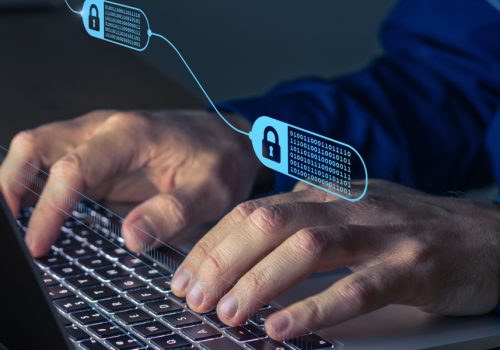From a nondescript disease out in Wuhan, China, COVID-19 has become a force we have all had to contend with. Businesses, big and small, have been affected with varying degrees of positive and negative outcomes. As a middle-sized business owner, and a business continuity consultant, this crisis gave me a first-hand seat on what it means to be an effective manager in a crisis. Granted the crisis is not yet over and the lessons still abound, the following are my six lessons on surviving your next crisis:
1. Deciding when to activate my business continuity plan
COVID-19 has impacted businesses differently, with a mix of negative and positive impacts. The impacts were felt at different times for different businesses. For example, the online collaboration software Zoom was a clear winner as the pandemic forced businesses to shut and people to work remotely; however, this increased demand exposed some security challenges on the platform.
So, the question most business owners do not always have a clear answer for is, “When should I activate my BCP?” Defining and updating a proper criterion for when an incident has progressed to a crisis and deserves business continuity activation is important. Identifying various impacts such as customer, employee, operational, supplier, and their thresholds that justify initiation of a formal response can help you ensure your BCP is activated on the right time and is effective in minimizing negative impacts of the crisis.
COVID-19 began in December of 2019, but the first effect only started to be felt in my country, Kenya, on March 13, 2020 when the first case was reported. As more and more cases were reported, the government instituted various preventative measures to minimize the spread, including complete shutdown of some businesses, restriction of some activities, prevention of inter-state travel, and a dusk to dawn curfew.
At our company, we had our first crisis meeting on March 20, 2020 when the impact of the government directives started to be felt. About 10% of our clients who had previously contracted us, began to cancel or postpone. In addition, we could already tell that this crisis would affect our ability to travel, and around 30% of our clients were outside the country. As the crisis progressed, other impacts started to emerge. Interestingly, some positive impacts also started to emerge with clients wanting to revamp or review their business continuity preparedness. A key learning from this experience for us as a crisis management team was realizing that there is a great need to:
1. Look at external events even when they may not at the particular time be affecting you
2. Analyze both immediate and far-reaching effects
3. Determine if your current business continuity responses are relevant or need to be adapted
4. Make relevant changes as soon as possible
Some of the things that became apparent immediately were that our recovery time objectives for projects were inaccurate. Our pandemic planning needed to be improved and our communication plan re-evaluated.

2. Setting up a “war-time” team
Most companies will have set crisis management teams with representatives from different critical units who then implement the business continuity response. The crisis management team is led by a crisis management leader who is either the CEO or reports directly to the CEO. The role of the CMT is to operate, coordinate, and communicate the business continuity response. The importance of effective leadership has been emphasized in various business books. What became apparent is that there are stark differences between leading in “peace time,” i.e., when the market conditions are relatively known, and leading in “war time.”
While we had an existing CMT, we quickly realized it was necessary to make changes to ensure the CMT was ready for war. Some of the things we did immediately were:
- We identified if we had the right CMT members. There may be some people who may just not be effective in a crisis. Such unit leaders may need to be retired during this time or supported by other competent colleagues. We ended up expanding our CMT to cater to our emerging needs.
- We divided our response into smaller parts centered on themes. For the basis of this crisis we had the following themes: customer, employees, legal, business development, supply chain, finance, work area.
- We identified focus areas. Even as you break up your response into smaller parts, certain areas will require to be stabilized first and thus need to be prioritized.
- We managed communication both internally and externally ensuring we had a consistent message. We ensured especially that falsehoods are not spread through official and unofficial channels linked to the company.
- We had to make decisions with limited information. Do not be afraid to take tough decisions, this may include decisions to postpone major projects, fast-track other projects, review expenses, etc.
- We led with compassion. As you take on the challenges of the crisis, always put your employees first knowing that if they are well taken care of, then they will take care of your business and customers.
3. Communication
It is never more important than during a crisis, to send clear unambiguous messages that efficiently convey the information that you want to deliver. The first thing in getting communication right is to have a clear understanding of your stakeholders and what they require from you during a crisis.

A formal communication plan may need to be developed, with different CMT champions elected to spearhead the communication as per their area of expertise. However, ensure that:
1. The person relaying the communication is seen as credible.
2. Where not enough information is available, be honest and mention it to your stakeholders. Ask for more time where additional information may be needed. Do not make promises you cannot keep!
3. You have decided on how much you wish to disclose. Appropriate disclosure facilitates trust and credibility and helps recipients of your message develop empathy and understanding. Make information in your message specific and refer to concrete details to avoid misunderstanding.
In our experience, we talked to our employees every other week and made them aware of any changes. We also identified suppliers and regulators we needed to engage with and re-evaluate our legal and regulatory responsibilities. While our customers were adjusting to COVID-19 themselves, we made sure to avail our expertise and listening ear. That resulted in an almost win-win situation all the way.

4. Getting help
With COVID-19 affecting different countries at different stages, it was helpful to have forums where business continuity was discussed. Learning from countries where the pandemic was at an advanced stage helped in forward planning. Having in-country and in-sector forums where other professionals would raise and discuss business continuity issues helped in gaining knowledge and implementing strategies that were proven to work. Having industry forums also helped some of our clients in lobbying and communicating with regulators and other decision makers on support needs.
5. Dealing with performance slump
As Lee Iaccocca, former CEO of Chrysler Corporation, said: “All business operations can be reduced to three words: people, product, and profit.” People come first. Unless you have got a good team, you cannot do much with the other two. Organizations implement systems, and systems are run by people. To be effective organizations have different people playing certain positions.
In a crisis and because of shifting focus, people drift. This may mean certain positions are left wide open “exposed” or, focus on the crisis leaves certain operations that are termed essential but not critical not being done. We found it necessary based on shifting focus and changing environments to:
1. Redefine and re-communicate organizational objectives including shifted priorities
2. Focus teams and ensure no positions were left unnecessarily exposed. Resist the urge to have everyone focused on the crisis management. Operations must go on!
3. Ensure we had skilled managers managing nonessential operations too
4. Manage more closely and define a few critical KPIs that require close monitoring with update meetings to superiors more frequently
5. Reevaluate budgets and resources. For example, during this crisis we invested heavily in digital tools to enhance performance.
6. Managing change
Individuals, managers, teams, and organizations that do not adapt to change in timely ways are unlikely to survive in our increasingly turbulent world environment. COVID-19 brought a lot of change to organizations and it was only through having the right attitude to change that our business survived.
Some of the key changes we experienced were as follows: Firstly, our staff moved from 50% working remotely to 95%. Secondly, assignments that had previously been done face to face were now being done entirely remotely.
In addition, we saw an increase in lead time with courier deliveries as transport inter country and interstate were restricted. Lastly, we had to deploy new methods of delivery including a fully online option for training. It was necessary to manage these changes effectively to get buy-in from both our internal and external stakeholders.
The first thing you need to do is overcome resistance. This needs to be done through communication and talking through the need for change. It is effective at this point to bring out the salient issues with this crisis, i.e., it may be long drawn, with no clear end in sight, and without change you are facing imminent organizational extinction. Implementing the change requires you to let go of old ways and embrace new ways of doing things. What we found effective is that as a leader your staff must see you embracing the new ways of working. While you may suffer pitfalls, it is necessary to take them with a positive attitude and fail fast and fail forward. Finally, reinforcement of the change is necessary so that the new ways of working become stabilized.
In summary, I hope to take the lessons from this crisis to better both the running of my business and the way I implement business continuity for my customers. By ensuring I can offer my real-life experience to crises I aim to build the practice and better the overall performance of implemented business continuity management systems.









